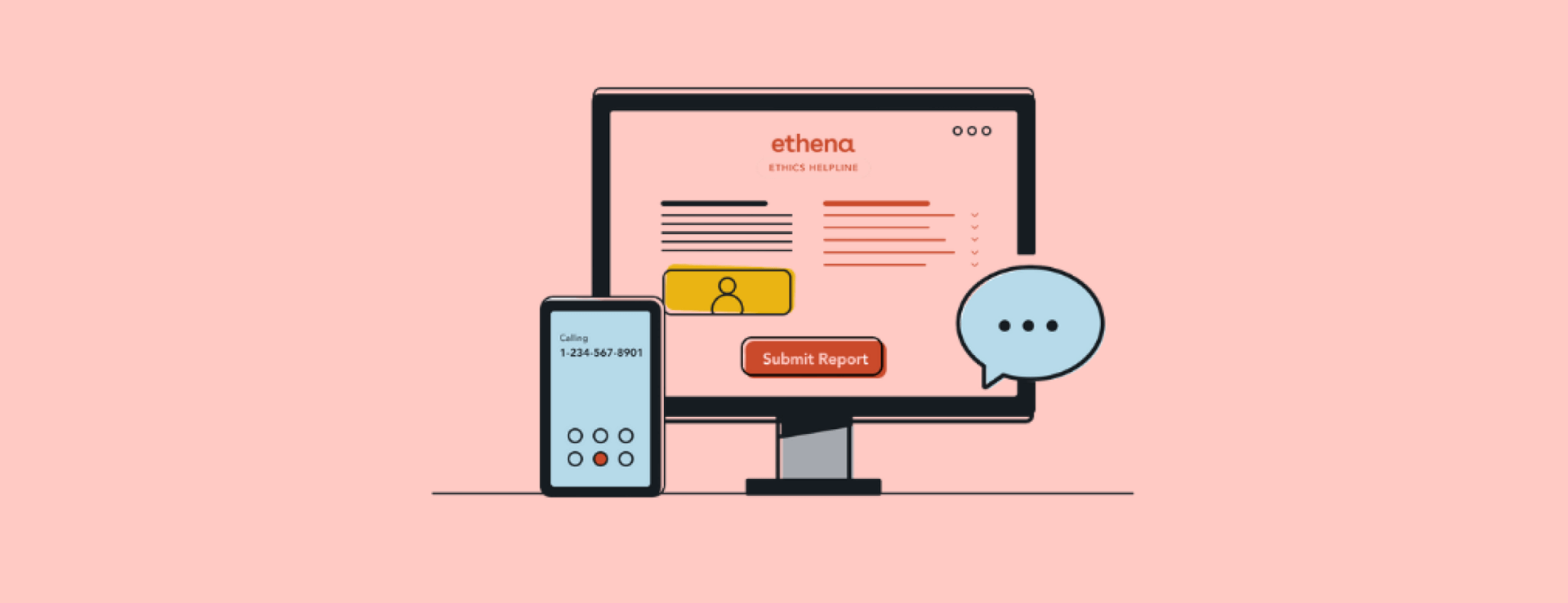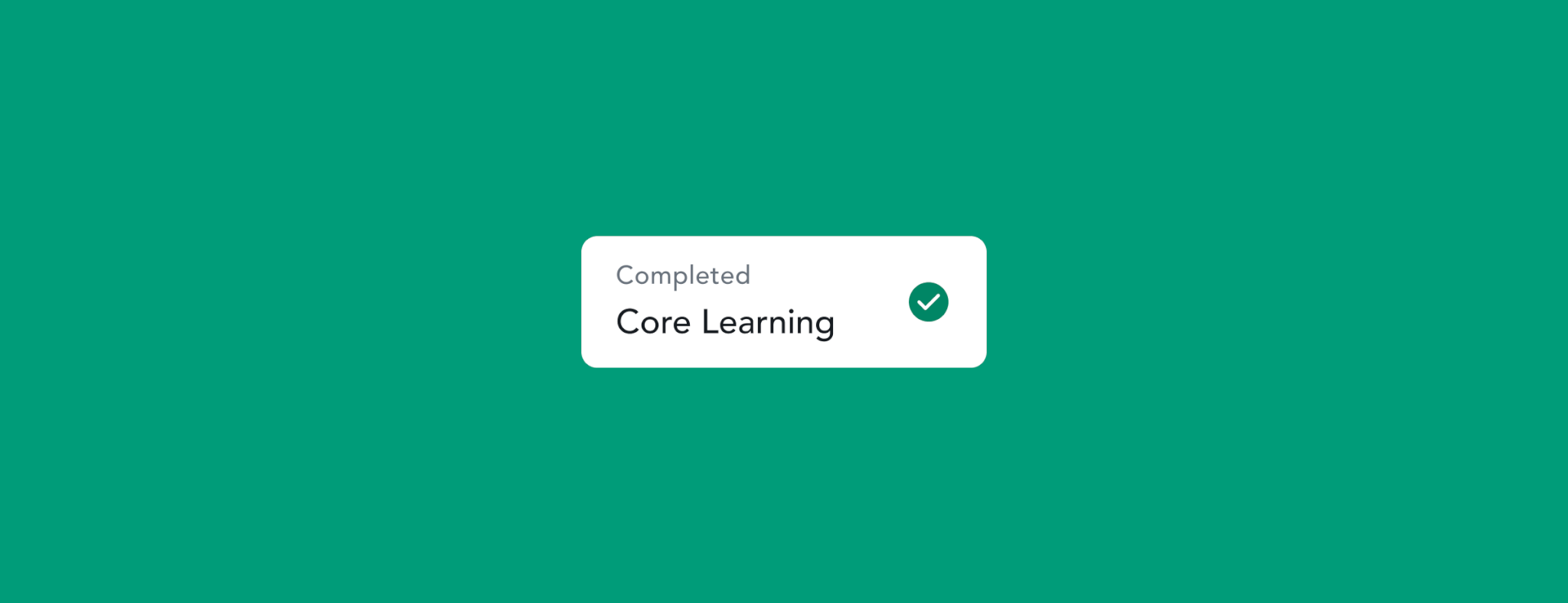If something felt off at work — maybe you overheard a manager making discriminatory comments, or noticed a pattern of suspicious financial reporting — would you know what to do? More importantly, would you feel safe speaking up?
That’s where an ethics hotline comes in.
Despite what the name might suggest, an ethics hotline isn’t just a phone number. It’s a broader reporting system that companies use to surface and address issues like harassment, fraud, discrimination, safety concerns, and more. It’s one of the most important tools a company can have to maintain a culture of integrity and accountability — especially when it’s paired with a strong speak-up culture and a commitment to follow-through.
So, let’s break it down. What exactly is an ethics hotline, how does it work, and why does it matter?
What is an ethics hotline?
An ethics hotline is a reporting channel employees (and in some cases, contractors, vendors, or even customers) can use to raise concerns about unethical or illegal behavior at work. These hotlines can be run internally or managed by third-party providers, and they typically allow for multiple ways to report — including web forms, email, phone, and even mobile apps.
The goal is to make it easier, safer, and more accessible for employees to report when something isn’t right.
Hotlines are often part of a broader ethics and compliance program, and they serve as an early warning system. When employees have a clear, trusted place to go, organizations can catch and address problems before they spiral into legal issues, reputational damage, or major morale problems.
How ethics hotlines help organizations: 4 key benefits
At first glance, the obvious answer is compliance. For public companies, having an ethics hotline is required under regulations like the Sarbanes-Oxley Act. For others, they’re a core part of an internal reporting system that aligns DOJ best practices or third-party audit standards.
But the real value of an ethics hotline goes far beyond checking a legal box. When done right, a hotline can help create a stronger, safer, and more trustworthy workplace — and that shows up in both culture and business outcomes. Here are four key advantages:
1. Early detection of misconduct
Ethics hotlines function as an early warning system, enabling organizations to identify and address concerns before they escalate into larger legal, financial, or reputational risks. Whether the issue is financial misconduct, harassment, or a safety violation, the ability to intervene early is critical.
By providing employees with a secure and reliable channel to report concerns, companies can respond more quickly and mitigate potential harm — often avoiding costly consequences altogether.
2. Enhanced trust and accountability
When employees observe that their concerns are taken seriously and followed by appropriate action, it builds trust in leadership and reinforces a culture of accountability. A well-managed hotline demonstrates that ethical behavior is not merely aspirational, but operationalized across the organization.
This trust encourages ongoing transparency and strengthens the overall effectiveness of ethics and compliance programs.
3. Promotion of a speak-up culture
Ethics hotlines support the development of a workplace culture rooted in integrity and openness. They signal that the organization is committed to doing the right thing — and not just when it's easy.
A strong speak-up culture empowers employees at every level to raise concerns without fear of retaliation, which in turn promotes ethical decision-making, stronger leadership, and a more inclusive workplace.
4. Regulatory alignment and legal risk reduction
Many regulatory bodies — including the U.S. Department of Justice (DOJ) and the Securities and Exchange Commission (SEC) — identify anonymous reporting mechanisms as a key element of an effective compliance program. For publicly traded companies, ethics hotlines aren't just recommended; in most cases, they’re required.
A documented and responsive reporting process can also demonstrate good-faith efforts to regulators, auditors, and legal counsel in the event of an external investigation, reducing exposure to penalties and reputational damage.
5. Stronger reporting insights and risk management
When integrated with an HR case management platform, ethics hotlines provide valuable data that can reveal trends and help compliance teams take a more proactive approach to risk.
For example:
- A spike in reports from a particular department might indicate a leadership or culture issue.
- An uptick in retaliation-related concerns could suggest a breakdown in psychological safety.
- Recurring themes over time can point to systemic problems that require broader policy or training interventions.
In this way, hotlines become not only a reactive tool for issue resolution, but a strategic asset in identifying and addressing root causes.
How do ethics hotlines work?
Every company’s ethics hotline is a little different — and that’s a good thing. A hotline should be tailored to fit your organization’s structure, culture, and specific risks. Still, most follow a similar framework that takes a report from intake to resolution with care and consistency.
Here’s what that typically looks in practice:
Step 1: A concern is reported.
It starts with someone speaking up. An employee notices something troubling — maybe they witness a pattern of inappropriate behavior from a manager, suspect financial fraud, or see a safety hazard that’s being ignored. They want to say something, but they’re not sure where to turn.
This is where a well-communicated ethics hotline makes all the difference.
Modern hotlines are accessible through multiple channels: a phone number, a secure online form, an app, or even a QR code. Many systems allow the reporter to remain anonymous or share their name, depending on what feels safest to them.
The key here is ease of access. If an employee doesn’t know where to find the hotline — or worse, fears they’ll face retaliation for using it — the issue likely won’t get reported at all.
Step 2: The report is routed and triaged.
Once submitted, the report is logged into the system and routed to the appropriate point of contact. This isn’t just a matter of forwarding emails; most hotlines today use smart intake logic and custom workflows to categorize the report and send it to the right team (like HR for interpersonal issues, Legal for compliance concerns, or Finance for fraud).
This triaging process is essential for a few reasons:
- It ensures the report lands with the right stakeholder, quickly.
- It prevents conflicts of interest (e.g., if the report involves someone in HR, it’s automatically routed elsewhere).
- It helps prioritize high-risk issues that need immediate attention.
With ethics hotlines like Ethena’s, you can customize intake forms and create automated routing rules to match your company’s org chart and risk tolerance — helping you move from report to response faster and with fewer manual handoffs.
Step 3: An investigation begins.
Once the report is in the hands of the appropriate team, they assess whether an investigation is needed. If the issue is substantiated or complex, a formal investigation kicks off.
This might involve:
- Interviewing relevant parties
- Reviewing documents or communications
- Collecting digital or physical evidence
- Coordinating with outside counsel or third-party investigators (especially in high-risk or high-stakes cases)
This step requires discretion, structure, and documentation. Investigators need to remain impartial, protect the confidentiality of all parties, and avoid jumping to conclusions. At the same time, the clock is ticking; unresolved concerns can fester, and the longer it takes to act, the more trust you lose.
This is where modern hotline tools really shine. Many come with built-in case management features — things like audit logs, document uploads, task tracking, and automated timelines — to help teams stay organized and defensible in how they handle each case.
Step 4: Execute, follow up, and resolve.
Once the facts have been gathered and assessed, the next step is to take action. That might mean:
- Coaching or disciplinary measures
- Process or policy changes
- Escalating to leadership or regulators
- Or, in some cases, closing the case with no action needed if the concern wasn’t substantiated
Crucially, this step should also include some kind of communication back to the reporter — even if it’s a brief, “Thank you for reporting. We’ve looked into it and taken appropriate action.” If the report was anonymous, some systems (like Ethena’s) allow for secure, two-way follow-up without ever compromising the reporter’s identity.
This feedback loop is one of the most overlooked — and most important — parts of the process. When employees see that their concerns are taken seriously and that change happens as a result, it builds long-term trust in the system.
Are ethics hotlines effective?
Short answer: They can be. Long answer: It depends on how they’re implemented — and whether employees trust the system.
Let’s look at the data: according to the Association of Certified Fraud Examiners, organizations with hotlines detect fraud more quickly and experience significantly smaller losses than those without them. NAVEX's 2024 Benchmark Report echoes this: companies with high usage of their ethics hotlines were more likely to catch and correct issues before they escalated.
But here’s the catch: having a hotline is not the same as having an effective hotline.
If employees worry they’ll face retaliation for speaking up — or think no one will actually read their report — they’re far less likely to use it. That’s why the most effective programs do more than just check a box. They build a culture of trust around reporting and actively train employees on how (and why) to use the hotline.
Here are some key factors that increase effectiveness:
Anonymity options
The number-one fear employees have when reporting misconduct is retaliation. That fear can be paralyzing — especially if the concern involves a supervisor, a close colleague, or someone in leadership. Anonymity helps lower that barrier.
Effective ethics hotlines offer anonymous reporting as a default option. But the best systems go a step further: they enable two-way anonymous communication. That means investigators can follow up with questions or request more detail, and the reporter can respond — all without ever revealing their identity.
This kind of setup not only makes reporters feel safer, it also increases the odds of a successful resolution. Without the ability to ask follow-up questions, investigations can stall. But when anonymous dialogue is possible, the hotline becomes a truly dynamic tool, rather than a one-way suggestion box.
Clear, simple reporting processes
If reporting a concern feels like filing your taxes, people aren’t going to do it. The most effective programs design their intake process with the employee experience in mind. That means:
- Multiple access points (e.g., phone, web, QR code, app)
- Short, guided forms that help people articulate their concerns
- No jargon or legalese
- Easy-to-find links and clear instructions in onboarding materials, intranets, and posters
The easier and less intimidating it is to submit a report, the more likely someone will speak up, especially in high-stress situations where clarity and speed matter.
Timely investigations and real follow-through
Trust lives and dies in what happens after the report. If employees see that nothing gets done — or worse, that retaliation goes unpunished — they’ll stop using the hotline altogether. That’s why it’s critical to:
- Acknowledge every report
- Launch timely, impartial investigations
- Document findings and actions taken
- Close the loop with reporters whenever possible (even if it’s just a status update)
This follow-through doesn’t have to include sensitive details. It’s about letting the reporter know, “We heard you, we took this seriously, and we acted accordingly.”
Without this step, even the best hotline tool can feel like a dead end.
Consistent communication and awareness campaigns
Hotlines aren’t “set it and forget it” tools — employees need regular reminders that the system exists, that it’s safe to use, and that speaking up is encouraged.
This can include:
- Annual training on how to report and what to report
- Leadership messages reinforcing the importance of ethics
- Posters, intranet banners, and Slack reminders
- Real (anonymized) stories showing how reports led to meaningful change
The goal is to make reporting feel like a normal, supported part of workplace culture — not a risky act of defiance.
Some organizations even publish anonymized case summaries in their compliance newsletter. This not only reinforces transparency, but also shows employees that the company takes action when concerns are raised.
Leadership buy-in: not just in theory, but in action
This is the linchpin. A hotline can have airtight security, beautiful UX, and great documentation — but if leaders roll their eyes at reports, dismiss concerns, or model unethical behavior, the system collapses.
Leaders set the tone. When they take concerns seriously, support investigations, and hold themselves accountable to the same standards as everyone else, employees notice. And when they don’t, employees stop trusting the process.
It’s not enough for executives to say “ethics matters.” They have to demonstrate it — by encouraging feedback, rewarding transparency, and backing their compliance teams when hard decisions need to be made.
The bottom line
Ethics hotlines can be game-changers for organizations: catching issues early, surfacing blind spots, and protecting both employees and the business. But they don’t work in isolation.
For a hotline to be effective, it has to be trusted. And for it to be trusted, it has to be part of a broader culture of accountability, transparency, and action. When that foundation is in place, the hotline becomes more than just a compliance requirement; it becomes a cornerstone of an ethical, resilient workplace.
Discover how Ethena can support your E&C program
With Ethena’s secure, customizable Ethics Hotline, employees get a safe, trusted way to speak up — and your organization gets ahead of risks before they escalate. Seamlessly integrated with our compliance training library and aligned with key regulatory frameworks, our hotline does more than check a box — it reinforces the values at the heart of your ethics & compliance program.
Get in touch today to learn more.










